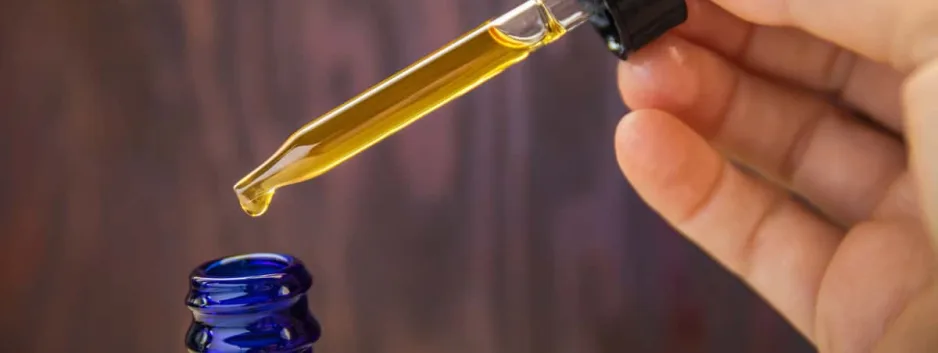

CBD Vapes Vs Sublingual CBD: Making an Informed Choice for Wellness
If you’re curious about the world of CBD and looking for the best way to use it, you’re in the right place. In this guide, we’re focusing on two popular choices: vaping CBD and taking it sublingually (under the tongue). Both ways are quite different in how they work and what they offer. Whether you’re new to CBD or looking to try something different, understanding these options is important. We’re here to help you figure out which one could be the best match for your needs.
According to Statista, sales of CBD products in the United States were $4.17 billion in 2022. By 2026, the value of this market is estimated to reach $4.23 billion.
What is Sublingual CBD?
Sublingual CBD refers to CBD products designed to be absorbed under the tongue. This method involves placing CBD oil or tinctures beneath the tongue and holding it there for a few seconds before swallowing. The key to sublingual CBD is its direct absorption into the bloodstream through the mucous membranes in the mouth, leading to faster and more effective results compared to traditional ingestion methods.
What is CBD Vape?
CBD vape involves inhaling CBD through a vaporizer or vape pen. This method heats a CBD-containing liquid to a point where it turns into vapor, which is then inhaled into the lungs. Vaping CBD offers a quick onset of effects, as the CBD is absorbed directly into the bloodstream through the lungs. This method is popular for its convenience and the immediate relief it provides.
Comparison of CBD Vape and Sublingual CBD
When comparing CBD vape vs. sublingual, several factors come into play. Let’s explore these eight comparison topics.
1. Onset of Effects
- CBD Vape: When you inhale CBD vapor, it enters your lungs and diffuses directly into your bloodstream. This process bypasses the digestive system and liver, allowing for a near-immediate onset of effects, typically within minutes. It’s ideal for those seeking quick relief.
- Sublingual CBD: Sublingual administration also avoids the digestive tract but is slightly slower in comparison to vaping. When you place CBD oil under your tongue, it absorbs through the mucous membranes and enters your bloodstream, usually within 15 to 30 minutes. This method is faster than ingestion but slower than inhalation.
2. Duration of Effects
- CBD Vape: The effects of vaping CBD are notable for their brevity. While they kick in quickly, they tend to last shorter than other methods, generally around 2 to 3 hours. This shorter duration can be beneficial for those who prefer to manage their dosage throughout the day.
- Sublingual CBD: In contrast, sublingual CBD typically offers a longer duration of effects, lasting around 4 to 6 hours. This prolonged effect is ideal for those who require sustained relief over a more extended period.
3. Bioavailability
- CBD Vape: Vaping CBD boasts a high bioavailability, which is the proportion of CBD that enters the circulation when introduced into the body. Because it bypasses the digestive system, a higher percentage of CBD is utilized by the body.
- Sublingual CBD: Sublingual administration also offers high bioavailability compared to oral consumption. Although slightly lower than vaping, it’s still an efficient way to absorb CBD into the bloodstream.
4. Convenience and Portability
- CBD Vape: Vaping requires a device (like a vape pen), which can be an additional expense and requires maintenance. However, it’s highly portable and convenient for on-the-go use.
- Sublingual CBD: Sublingual CBD is also portable and can be more discreet than vaping. It doesn’t require any additional equipment, making it a simpler choice for many users.
5. Discretion and Social Acceptability
- CBD Vape: Vaping can be less discreet due to the visible vapor and the act of inhalation. The social acceptability of vaping varies widely and can be less favorable in certain settings.
- Sublingual CBD: Sublingual administration is more discreet, with no visible signs of usage. It’s generally more socially acceptable and can be used quietly without drawing attention.
6. Flavor and Sensory Experience
- CBD Vape: Vaping CBD often comes with a range of flavors, enhancing the sensory experience. The act of vaping itself can also be pleasurable for some users.
- Sublingual CBD: The flavor of sublingual CBD depends on the product. Some users find the taste of hemp oil to be less appealing, although flavored options are available.
7. Potential Health Risks
- CBD Vape: Vaping has raised health concerns, particularly regarding the long-term effects on lung health. The safety of inhaling certain substances in vape oils is still under research.
- Sublingual CBD: Sublingual administration is generally considered to be safer with fewer potential health risks, making it a more suitable option for those with health concerns related to inhalation.
8. Cost and Accessibility
- CBD Vape: The initial investment in a vape device can be a factor, along with the ongoing cost of CBD oil cartridges.
- Sublingual CBD: Generally, sublingual CBD is less expensive over the long term. It’s widely available and doesn’t require the purchase of additional devices.
Which method is right for you?
Choosing between CBD sublingual vs vape comes down to personal preferences and specific health needs. If you prioritize quick relief and enjoy the act of vaping, then Cannapresso’s range of CBD vape products is tailored just for you. However, if you’re looking for a discreet, longer-lasting effect and prefer to avoid inhalation, sublingual CBD is an excellent choice.
Editorial Guidelines: This article is informational and not a replacement for professional medical advice. Consulting a healthcare provider is recommended before beginning any new supplement regimen.


Cannapresso is an End-To-End CBD Solution provider, with Design, Filling and Co-Packing.